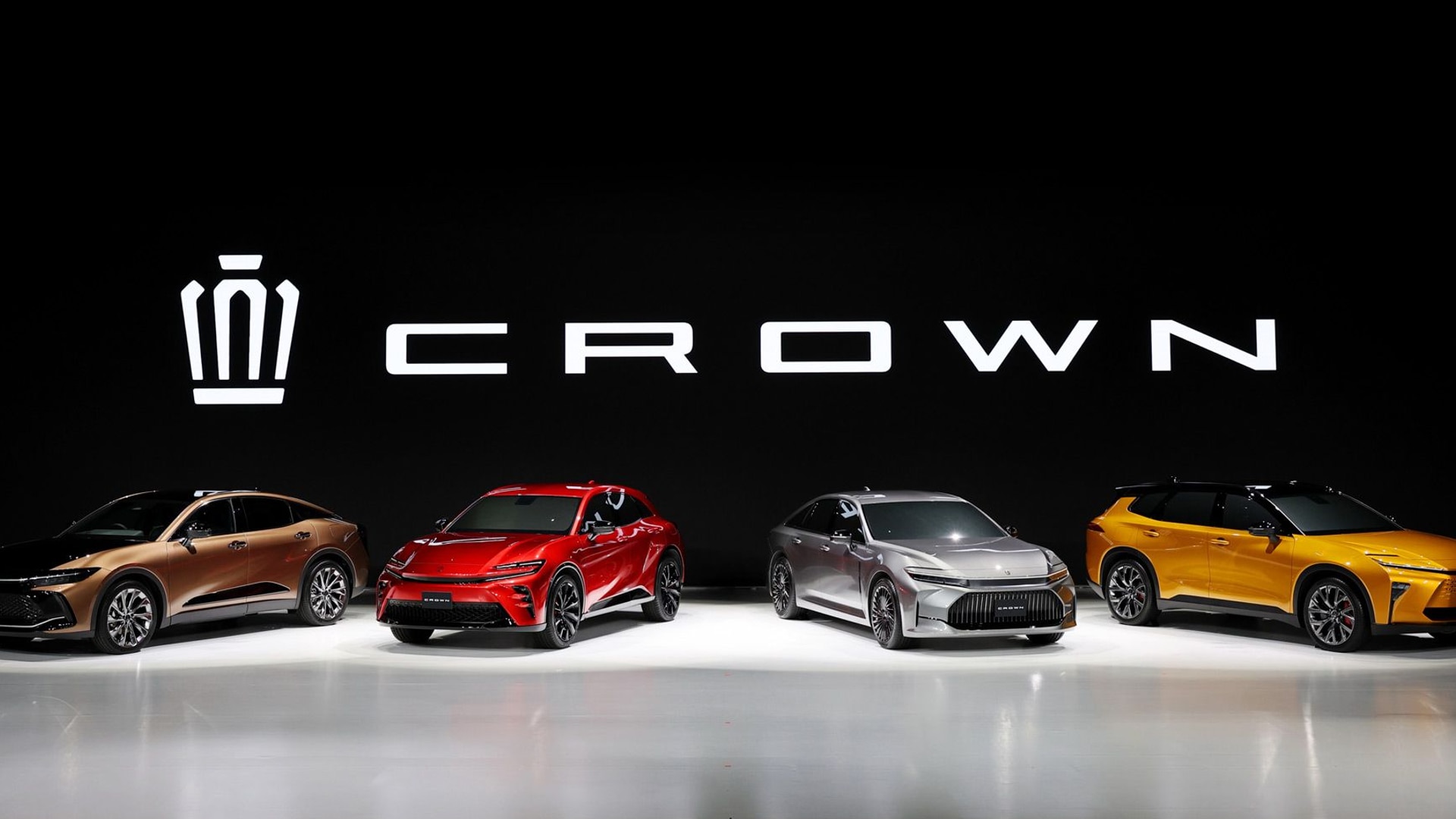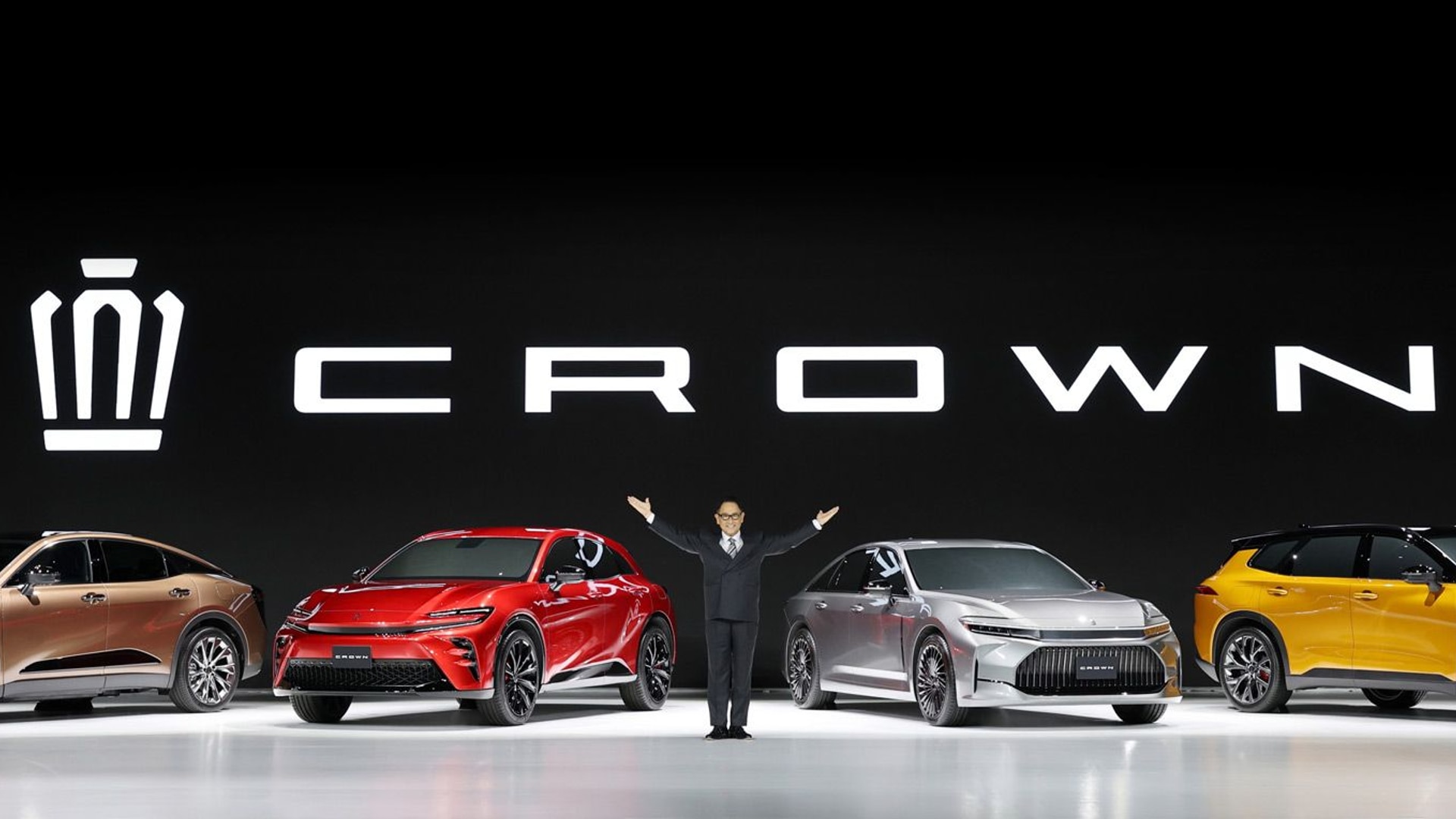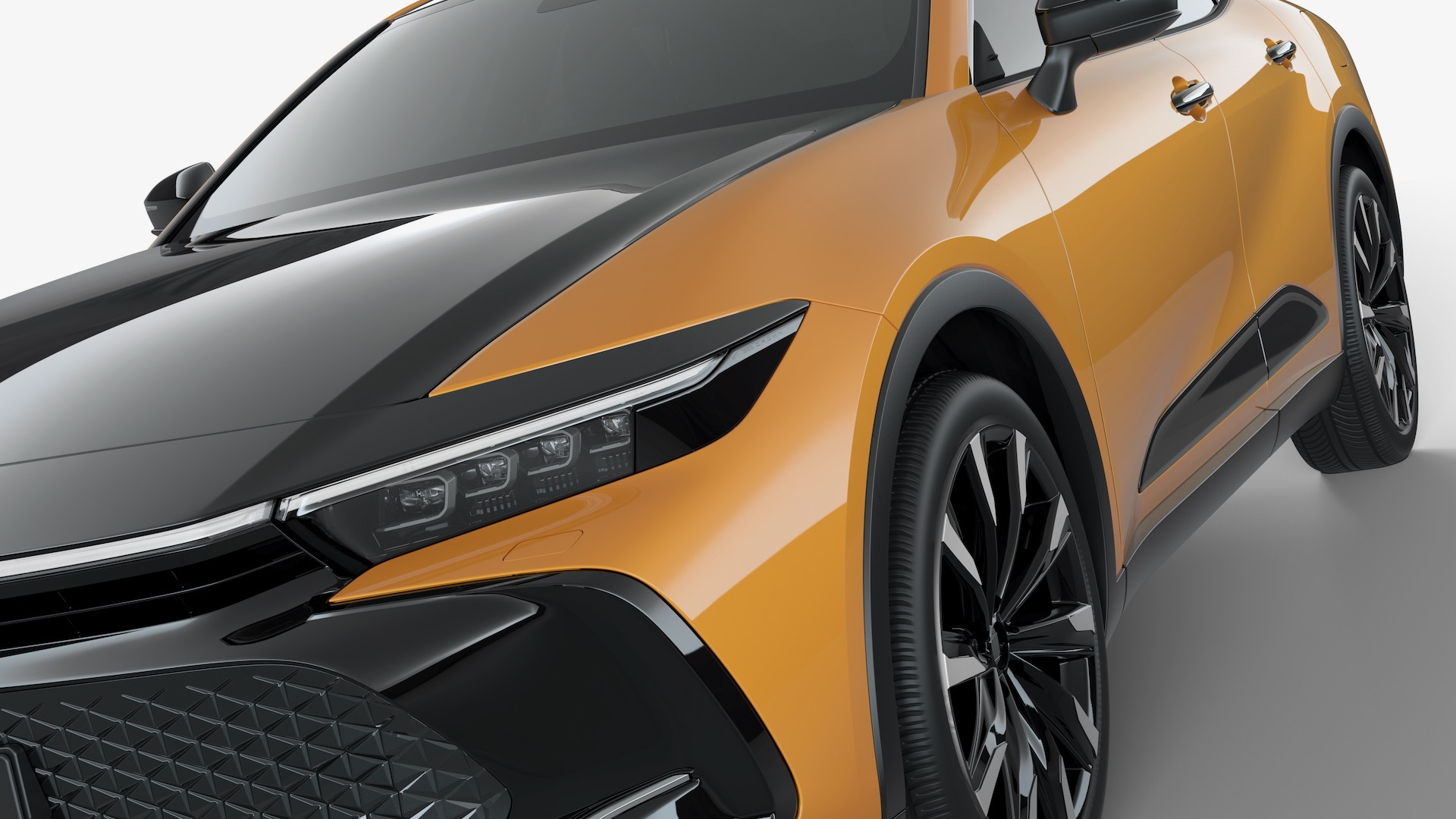The Toyota Crown lineup is due to expand with hydrogen fuel-cell and plug-in hybrid powertrains, as well as multiple body styles, Toyota confirmed Wednesday—although it hasn't yet confirmed what is coming to the U.S.
The Crown returned to the U.S. for the 2023 model year with hybrid powertrains and a raised-sedan body style, replacing the Avalon Hybrid sedan in the lineup. Toyota refers to the version arriving to the U.S. as the "Crossover type." Toyota has previously shown conventional sedan, "Sport" (hatchback), and "Estate" (wagon) versions of the Crown in concept form, and on Wednesday released some details on the production versions of these Crown variants.
The first to arrive will be the Crown Sport, launching this fall with a hybrid powertrain, followed by a plug-in hybrid version this winter. The Crown sedan also arrives this fall, and will feature both hybrid and fuel-cell powertrains, while the Crown Estate will launch in 2024 with hybrid and plug-in hybrid powertrains.

Toyota Crown Sport prototype
Compared to the current U.S.-market Crown, the new sedan will be about 2.0 inches longer, 2.0 inches wider, and will sit about 3.0 inches lower. The Sport and Estate versions will be even shorter than the sedan, but about as wide, with the Estate standing a bit taller than the Sport.
Toyota didn't provide further details on the powertrains. The Crown was revealed for the U.S. with the automaker's sportier Hybrid Max powertrain, which revolves around a conventional automatic transmission instead of Toyota's typical planetary hybrid system, which some versions still get. With the standard hybrid system, the Crown achieves up to 41 mpg combined in EPA testing.
A report of a Crown PHEV, or Crown Prime, to use Toyota's current plug-in hybrid nomenclature, circulated shortly after the U.S. launch of the Crown hybrid. But Toyota hasn't confirmed plans to offer the plug-in hybrid powertrain mentioned in this release in the U.S.-market Crown. A plug-in version of the Highlander or Grand Highlander is still expected, though.

Toyota Crown Estate prototype
On the fuel-cell front, Toyota redesigned the Mirai for 2021 as a sportier rear-wheel-drive sedan, and repositioned its powertrain as having "minus emissions" as it cleans the air. With the Mirai still relatively fresh, there isn't exactly a pressing need for Toyota replace it, or bring in a second model for the infinitesimal U.S. fuel-cell vehicle market.
Toyota does plan to start making fuel-cell modules in the U.S. starting this year. They'll be part of a kit that will essentially replace a traditional heavy-duty diesel engine in Class 8 semi trucks. Toyota didn't mention passenger cars in its announcement of this project, but hydrogen fuel-cell technology could help the automaker meet tougher emissions standards proposed by the EPA.


















